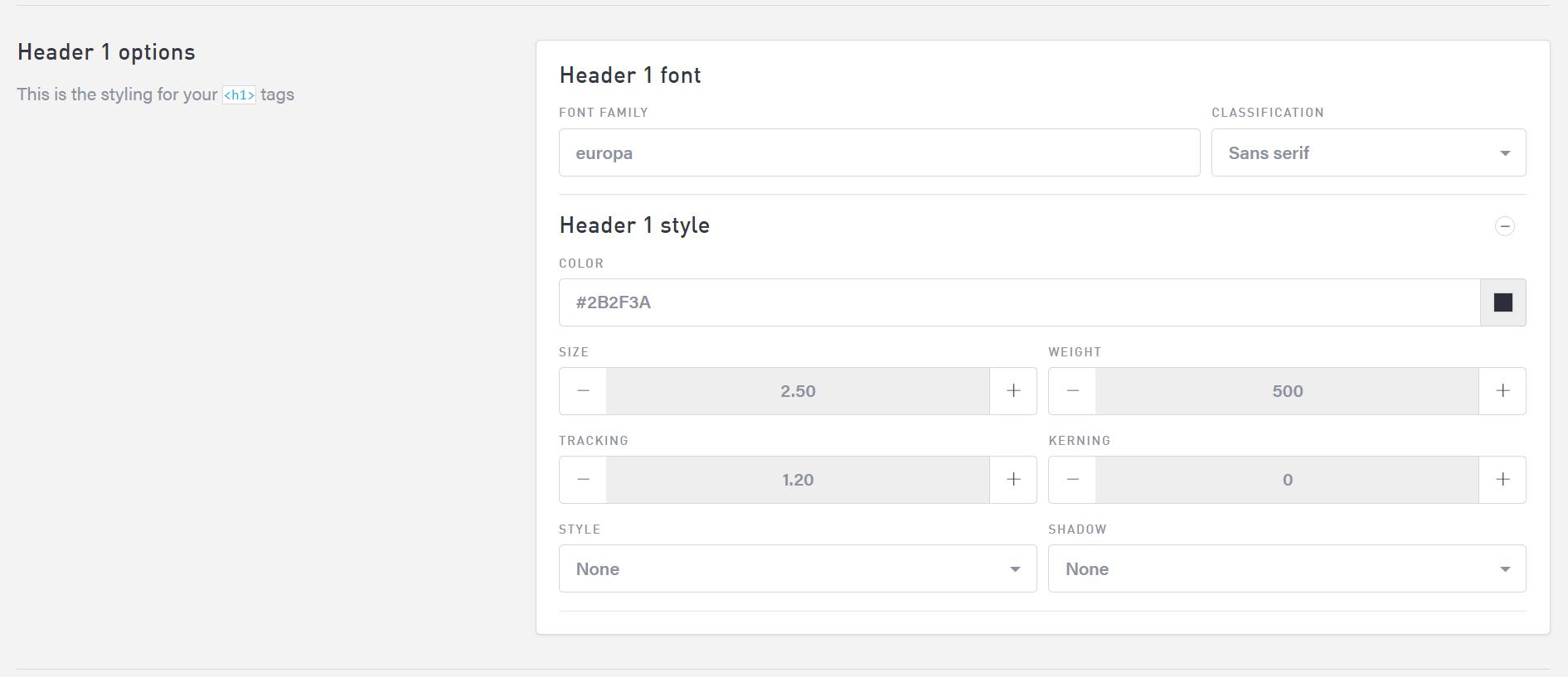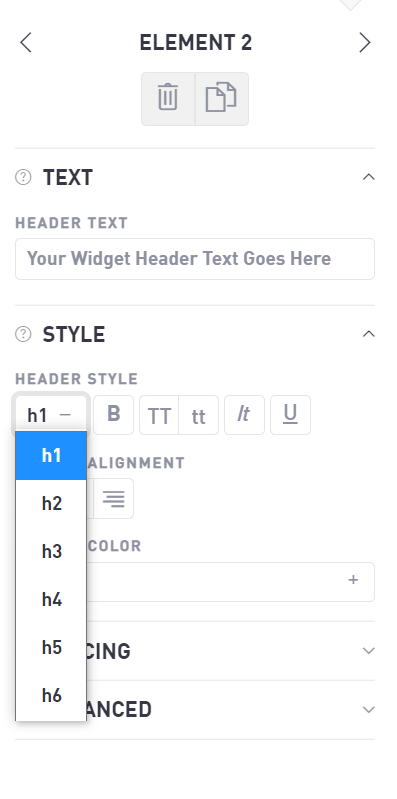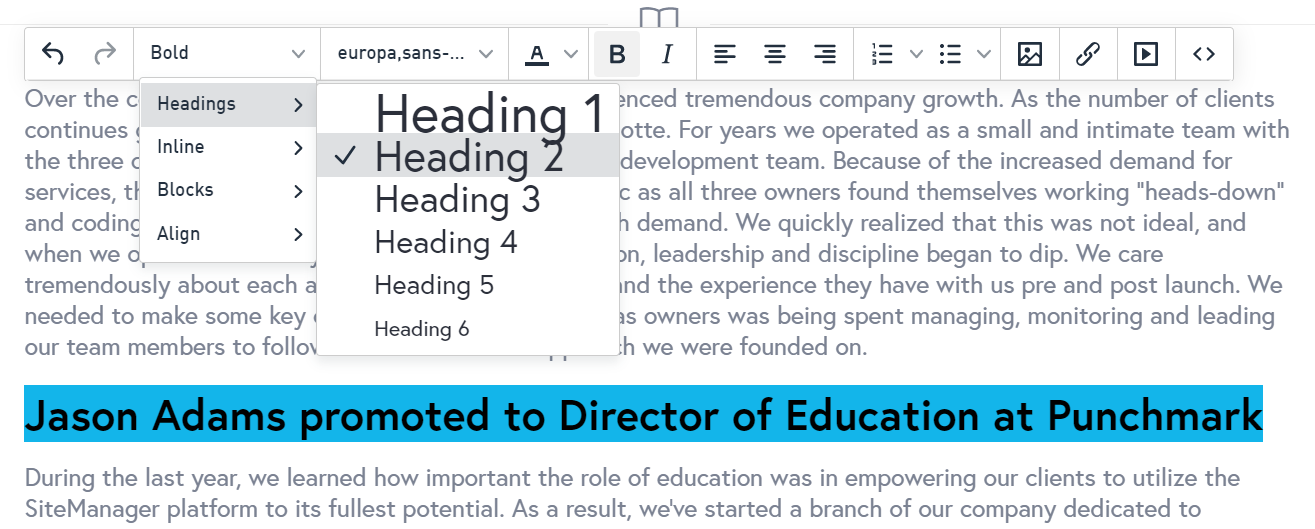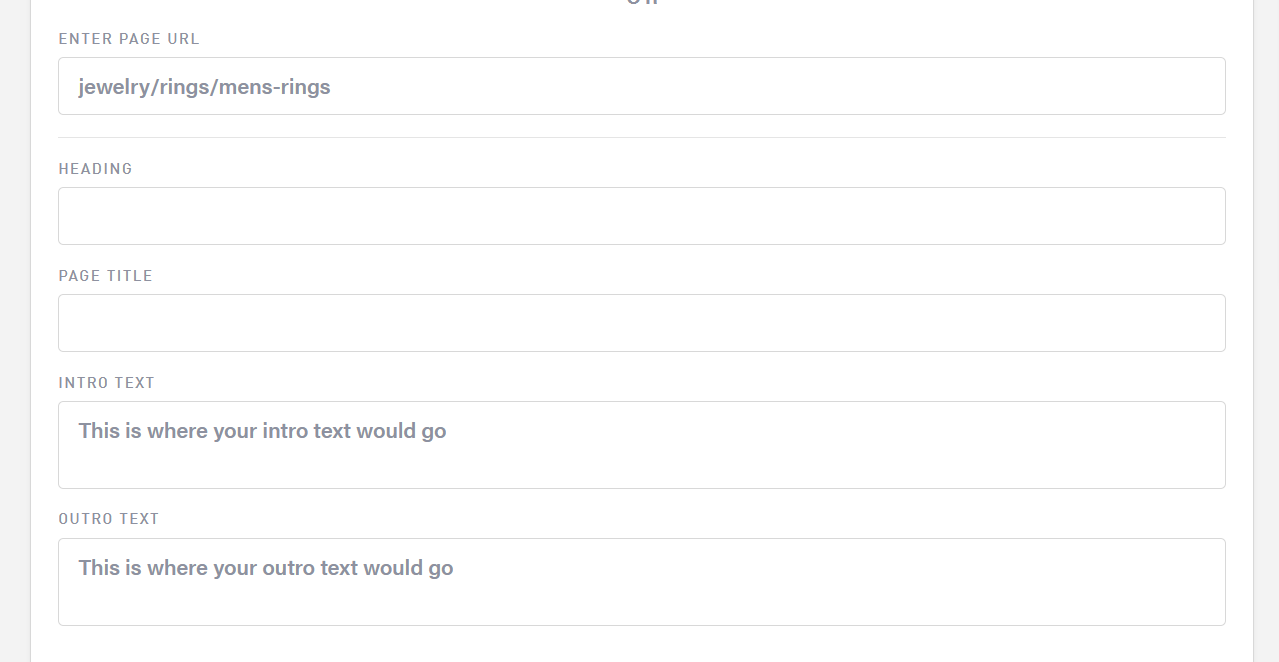Copywriting
After you’ve determined your keyword strategy and researched your target keywords and related keywords and phrases, it’s time to put your keywords into action. One of the most important and effective ways to do that is actually the simplest: using the text on your website, or page copy. Copy ranges from headers and sub-headers to body text, descriptions, and SEO copywriting.
Types of Copywriting
Headers
Imagine a TV show without episode names. While it’s certainly possible to not name episodes, it makes describing and finding them much harder. Similarly, Google is filtering through a lot of text. Headers (sometimes called Header Tags) help show the algorithm what your content is about so it knows immediately whether or not the following text is applicable to the search query. When used correctly, they can also help readers navigate page content.
Headers are broken down by numbers. H1 is the overall theme of the page – the title. H2, H3, and all the way down to H6 are sub-sections. Most of the time, pages will include an H1 and perhaps a few H2s. You may get down into H3 on blog posts or long pages (such as this one!), but H4-H6 are not used much.
Here are some general rules to follow when using headers:
H1s are page titles. Every single page should include an H1. Most pages only include a single H1.
H2s are section titles. If you are writing a blog post or a long article, use H2s every 250-500 words to break up the text visually and label important sections. You may also find H2s useful on pages that list your services, categories, or repair skills.
H3s are more detailed sections. Use these if you’re breaking up an H2 section into two or more pieces. H3s should not stand alone; if you have less than 2 within an H2, group the singular H3 text into your H2 section.
H4, H5, and H6 follow the same rules as H3s.
Make each header clear, concise, and functional.
Use keywords and related words in all your headers! Target keywords should appear in H1 if possible, and each H2 should have something to do with related keywords, synonyms, or adjacent topics.
Designing Headers in SiteManager
You can change the font, color, size, and style of your headers within SiteManager. Go to Design > Typography to change the font and classification for H1-H6. For more, see Typography.

Using Headers in PageBuilder
When building your pages, use the Header Style to specify which header you want to use.

Within the blog section, use the dropdown menu on the left side of the rich text toolbar to specify which style heading you’d like to use.

Page Text
It hopefully goes without saying that the body copy on your page is a great place to incorporate keywords and phrases. When writing page text, keep in mind who your target audience is and what you want them to learn from a given page. Body text has fewer “rules” than SEO copy and headers, but it should still be clear and contain keywords.
Add body text to a page using the Paragraph Text element of PageBuilder.
SEO Copy
SEO copy is similar to page text, but its purpose is more focused on algorithmic success. SEO text is optimally 100-150 words per paragraph. Mention your target keyword or phrase approximately 1-2 times per paragraph in shorter text and 3-5 times in longer blogs and articles. Most good SEO writing is anywhere from 250-500 words when it is the sole focus of a page. For more, see Landing Pages.
SEO writing on product pages varies slightly. Google and other search engines can’t “read” images, so in addition to alt-text on images, you want to showcase what the page is about textually without distracting from your goal (selling and showcasing your products). Adding a paragraph of text at the bottom of each category page that’s filled with keywords can improve your SEO.
Use lots of synonyms and related keywords so your page doesn’t get flagged for keyword stuffing. This occurs when a word or phrase appear numerous times throughout your text, and search algorithms think you’re trying to game the system. This is where keyword research and a good thesaurus come in handy. Instead of typing “man-made diamonds” over and over, use similar phrases, such as “created diamonds” or “lab-grown gemstones” to sprinkle through your text.
Another SEO copywriting no-no is duplicate text. If you have the same text on multiple pages, or you copy-paste from someone else’s website, your page will get flagged by the algorithm and decrease in rank.
To add SEO copy to your product pages, go to Sitemanager > Settings > Meta Information and use the page “Intro Text” and “Outro Text” for each URL. Limit your intro text (which goes above the products) to 1-2 sentences. The outro text should be a paragraph or two, 100-200 words, and is where SEO copy should go.
For more information, see Meta Information.

Copywriting in Practice
Let’s go expand on our previous example from keywords:
The Golden Karat has a list of keywords and related topics to “gold rings” and they’re ready to incorporate them into their website. They start by writing an SEO product paragraph for their “gold ring” category. This 100-word paragraph includes phrases such as “high-quality solid gold rings,” “gold wedding bands,” “custom ring engraving,” and “pure metals.” They also spend a few sentences highlighting the benefits of gold, as it is a non-corrosive and non-reactive metal, explaining that it’s perfect for daily wear.
Next, they check each page relating to gold rings and ensure each page has an H1 that contains at least one of their target keywords.
When adding SEO-friendly elements to your site, it’s easy to get overwhelmed. Start small, with one or two paragraphs of copy per day, and update your site incrementally. Or you can elect to hire a copywriter or a proofreader. SEO copywriters are easy to find, and they may even help you with keyword research.
Copywriting Checklist
Copywriting is one of the biggest and most important aspects of your website when it comes to SEO. Without words on pages, there is little for search engines to look through.
Understanding Copywriting
After reading this section, you should understand the following:
How can you use headers to improve your SEO?
Where can you specify header text in PageBuilder? Where can you customize headers on your site?
What are some of the specifics of SEO copywriting (vs regular page copy)?
What should you definitely avoid when writing SEO copy?
Copywriting Action Items
To improve your SEO using page copy, follow one or more of these steps:
Add SEO paragraphs to the bottom of each product page
Check that each of your H1s contains one of your target keywords
Add target keywords and related keywords to your page copy; aim for paragraphs of 100-150 words each
Use these copywriting and header best practices on your blog
